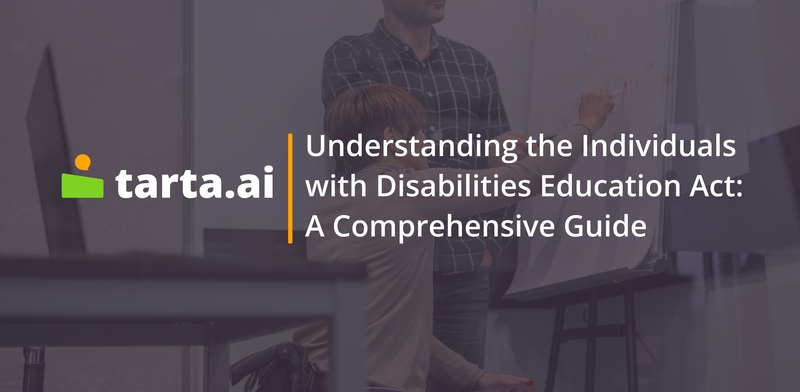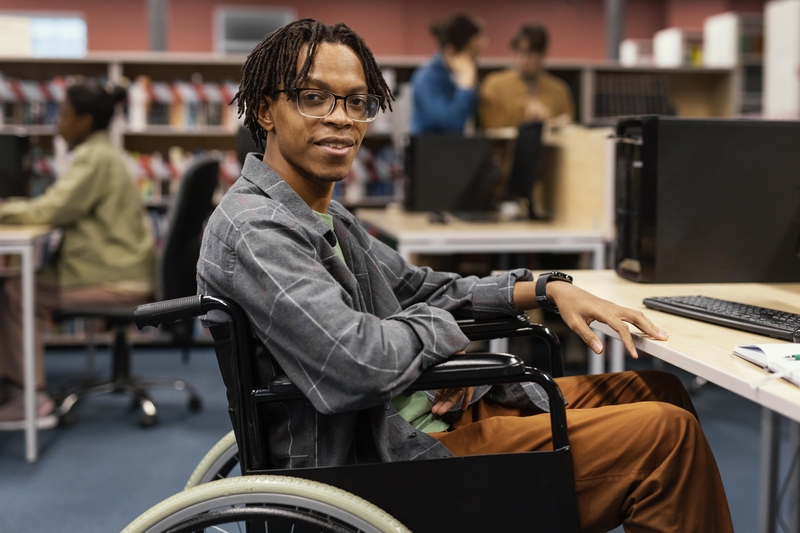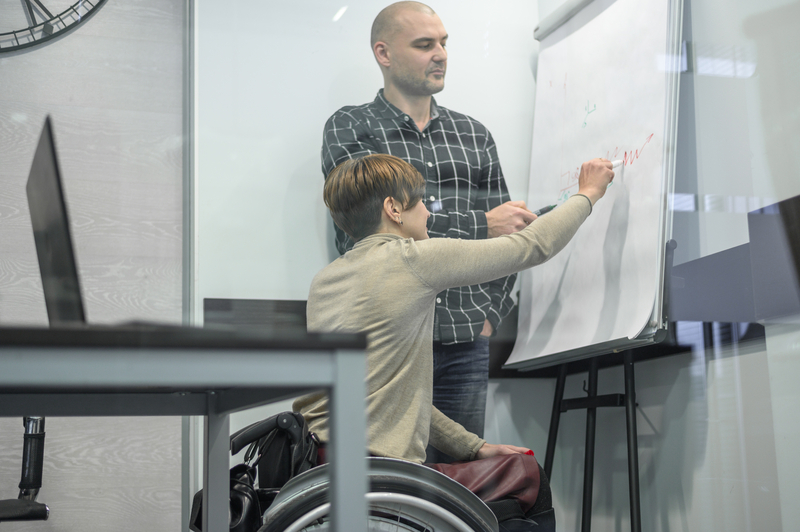Understanding the Individuals with Disabilities Education Act: A Comprehensive Guide

Introduction
The Individuals with Disabilities Education Act (IDEA) is a federal law that was enacted in 1975 to ensure that children with disabilities receive a free and appropriate public education. The law has been amended several times, with the most recent updates occurring in 2004. IDEA is designed to help students with disabilities receive a high-quality education and to provide them with the necessary tools to transition into adulthood.
Purpose of the Law
The purpose of IDEA is to ensure that all children with disabilities have access to a free and appropriate public education that meets their unique needs. The law provides specific guidelines for the provision of special education and related services to children with disabilities, including the development of an Individualized Education Program (IEP) and the provision of accommodations and modifications necessary for the child to access the curriculum.
Importance of IDEA in Ensuring Children with Disabilities Receive a High-Quality Education
IDEA is important in ensuring that children with disabilities receive a high-quality education because it provides a framework for the provision of special education and related services that are tailored to the unique needs of each child. By providing an IEP, accommodations and modifications, and transition planning services, IDEA helps students with disabilities succeed in school and beyond.
Eligibility for Services under IDEA
Under IDEA, children and young adults from birth to age 21 who have a disability that impacts their educational performance are eligible for special education services. The law includes 13 categories of disability that qualify for services, which are:
- Autism
- Deaf-blindness
- Deafness
- Emotional disturbance
- Hearing impairment
- Intellectual disability
- Multiple disabilities
- Orthopedic impairment
- Other health impairment (e.g. ADHD, asthma, diabetes)
- Specific learning disability
- Speech or language impairment
- Traumatic brain injury
- Visual impairment
To be eligible for services, a child must be evaluated and found to have one of these disabilities, and that disability must have a significant impact on their ability to learn and participate in school. It's important to note that not all children with disabilities qualify for services under IDEA, and eligibility can vary depending on the individual needs of the child.
Children Eligible for an Individualized Education Program (IEP)
Children with disabilities who are eligible for services under IDEA are entitled to an Individualized Education Program (IEP). The IEP is a legally binding document that outlines the special education and related services that the child will receive.

Photo: Freepik
Individualized Education Program (IEP)
An IEP is a comprehensive plan that outlines the child's current level of functioning, sets measurable goals for academic and functional progress, and identifies the services and accommodations necessary for the child to meet these goals. The IEP is developed by a team of professionals, including the child's parents or guardians, teachers, therapists, and other specialists.
Free and Appropriate Public Education (FAPE)
Under IDEA, schools are required to provide children with disabilities with a "free and appropriate public education" (FAPE). This means that the education provided must be at no cost to the family, and it must meet the child's unique needs as outlined in their IEP. Schools must also provide accommodations and modifications that allow the child to access the curriculum to the greatest extent possible.
Least Restrictive Environment (LRE)
Another important principle of IDEA is that children with disabilities should be educated in the "least restrictive environment" (LRE) possible. This means that whenever possible, children with disabilities should be educated in general education classrooms alongside their non-disabled peers. To accomplish this, schools must provide the necessary accommodations and supports to ensure that children with disabilities can access the curriculum and participate fully in classroom activities.
Transition Planning Services
Transition planning is an essential part of IDEA and is designed to help students with disabilities successfully transition from high school to postsecondary education, employment, or independent living. Transition planning services must begin no later than age 16, or earlier if appropriate, and must be included as part of the student's IEP.
Transition planning should involve assessments of the student's interests, abilities, and needs, as well as identification of postsecondary goals. The goals should be based on the student's strengths, preferences, and interests, and should include academic and functional goals that will help the student achieve their desired postsecondary outcomes.
In addition to setting goals, transition planning should identify the services and supports necessary to help the student achieve their goals. These may include vocational education, job training, and independent living skills instruction, as well as accommodations and modifications that will allow the student to access these services.
Importance of Collaboration between Parents and Schools
Effective collaboration between parents and schools is critical to ensuring that children with disabilities receive the best possible education. IDEA recognizes the important role that parents play in the education process and requires schools to involve parents in all decisions related to their child's education.
Parents have the right to participate in all meetings related to their child's education, including IEP meetings, and to access all records related to their child's education. In addition to these legal rights, parents and schools should work together to ensure that the child's unique needs are being met and that the child is making progress towards their goals.

Photo: Freepik
Obtaining Services Under IDEA
To get services under IDEA, the first step is to contact your child's school and express your concerns about their educational performance. The school is then required to evaluate your child to determine if they have a disability and if they are in need of special education services.
Here are the steps involved in the process of obtaining services under IDEA:
- Referral: A referral can be made by a parent, teacher, or other professional who has concerns about a child's educational performance.
- Evaluation: The school must conduct a comprehensive evaluation of the child to determine if they have a disability and if they are in need of special education services. The evaluation should assess all areas related to the child's suspected disability, and should be conducted in the child's native language or mode of communication.
- Eligibility determination: Based on the evaluation, the school will determine if the child is eligible for services under IDEA. If the child is found to have a disability that impacts their educational performance, they will be eligible for services.
- Development of an Individualized Education Program (IEP): If the child is found to be eligible for services, the school will work with the parents to develop an IEP, which is a plan that outlines the child's educational goals, the services they will receive, and how progress will be measured.
- Provision of services: Once the IEP is developed, the school is responsible for providing the services outlined in the plan. Services may include special education instruction, related services (such as speech therapy or occupational therapy), and accommodations or modifications to the child's learning environment.
- Review and revision of the IEP: The IEP must be reviewed and revised at least annually to ensure that it continues to meet the child's needs and is aligned with their educational goals.
Conclusion
In conclusion, the Individuals with Disabilities Education Act is a critical federal law that ensures that children with disabilities receive a high-quality education that is tailored to their unique needs. The law provides for the development of an Individualized Education Program (IEP) that outlines the services and accommodations necessary for the child to meet their goals, and ensures that the education provided is at no cost to the family and meets the child's unique needs.
IDEA also recognizes the importance of educating children with disabilities alongside their non-disabled peers in the least restrictive environment possible, as well as the importance of involving parents in the decision-making process and providing transition planning services to help students successfully transition to adulthood.
By ensuring that children with disabilities receive a high-quality education, IDEA helps to break down barriers and create a more inclusive society that values diversity and promotes equal opportunities for all.
- The Individuals with Disabilities Education Act (IDEA) is a federal law that ensures children with disabilities receive a free and appropriate public education.
- IDEA provides a framework for the provision of special education and related services tailored to the unique needs of each child with disabilities.
- Children and young adults from birth to age 21 who have a disability that impacts their educational performance are eligible for special education services under IDEA.
- An Individualized Education Program (IEP) is a comprehensive plan outlining the special education and related services that the child will receive.
- Schools are required to provide children with disabilities with a "free and appropriate public education" (FAPE) and educate them in the "least restrictive environment" (LRE) possible.
- Transition planning is an essential part of IDEA to help students with disabilities transition from high school to postsecondary education, employment, or independent living.
- Effective collaboration between parents and schools is critical to ensuring that children with disabilities receive the best possible education.
- The process of obtaining services under IDEA involves referral, evaluation, eligibility determination, IEP development, and annual review and reevaluation.
FAQ
What is the Individuals with Disabilities Education Act (IDEA)?
The Individuals with Disabilities Education Act (IDEA) is a federal law that guarantees children with disabilities access to a free appropriate public education (FAPE) in the least restrictive environment (LRE) possible.
What disabilities are covered under IDEA?
IDEA covers a wide range of disabilities, including but not limited to, autism, deafness and hearing impairment, blindness and visual impairment, intellectual disabilities, emotional disturbance, specific learning disabilities, and traumatic brain injury.
What is an Individualized Education Program (IEP)?
An Individualized Education Program (IEP) is a written plan that outlines a student's educational goals and the services and accommodations needed to meet those goals. The IEP is created by a team that includes the student's parents, teachers, and other professionals.
What are the procedural safeguards under IDEA?
IDEA provides parents and students with a number of procedural safeguards, including the right to participate in the development of the IEP, the right to an independent educational evaluation, and the right to dispute any decisions made by the school district.
What is the difference between an IEP and a 504 plan?
An IEP is a legally binding document that outlines a student's educational goals and the services and accommodations needed to meet those goals. A 504 plan is a less formal plan that provides accommodations to students with disabilities who do not require special education services.